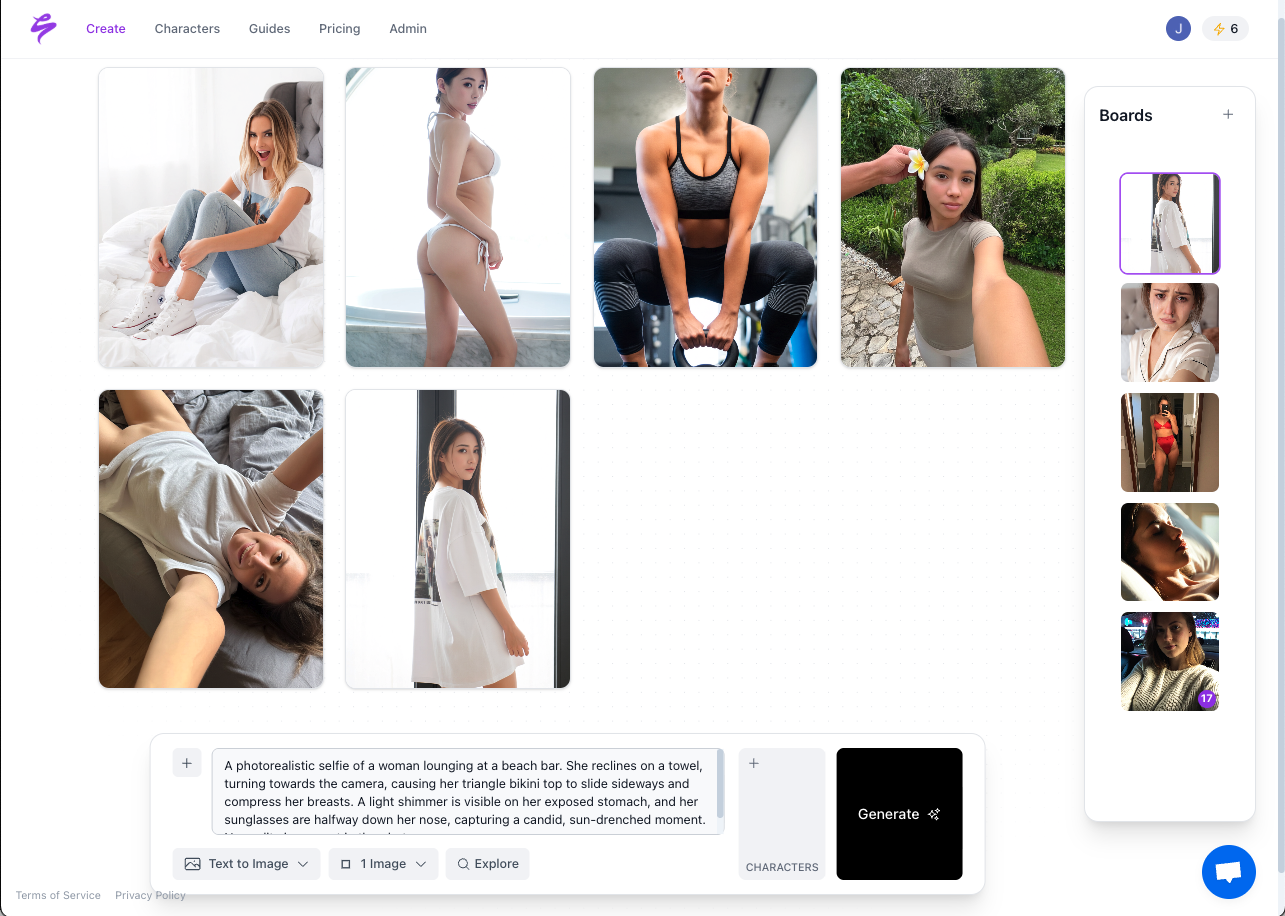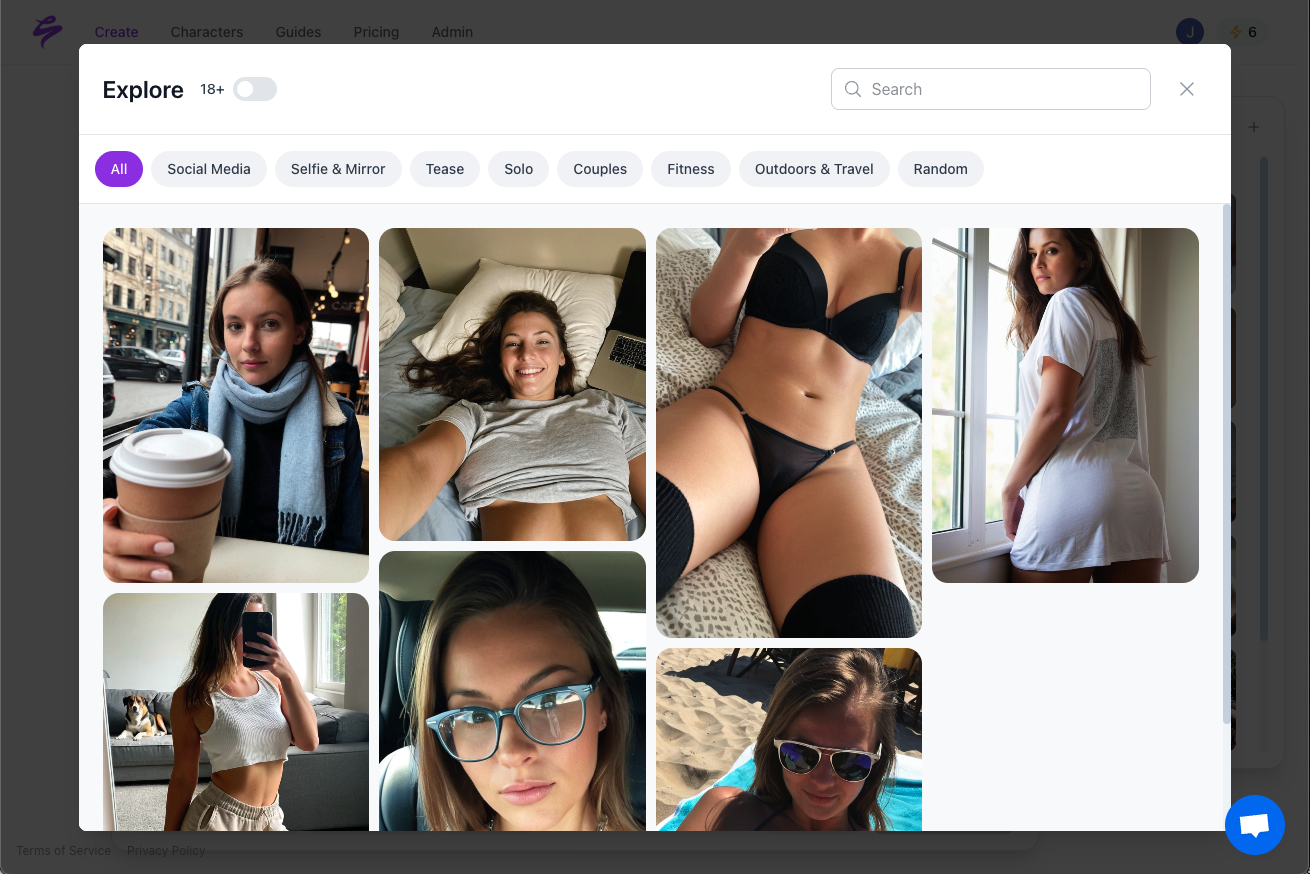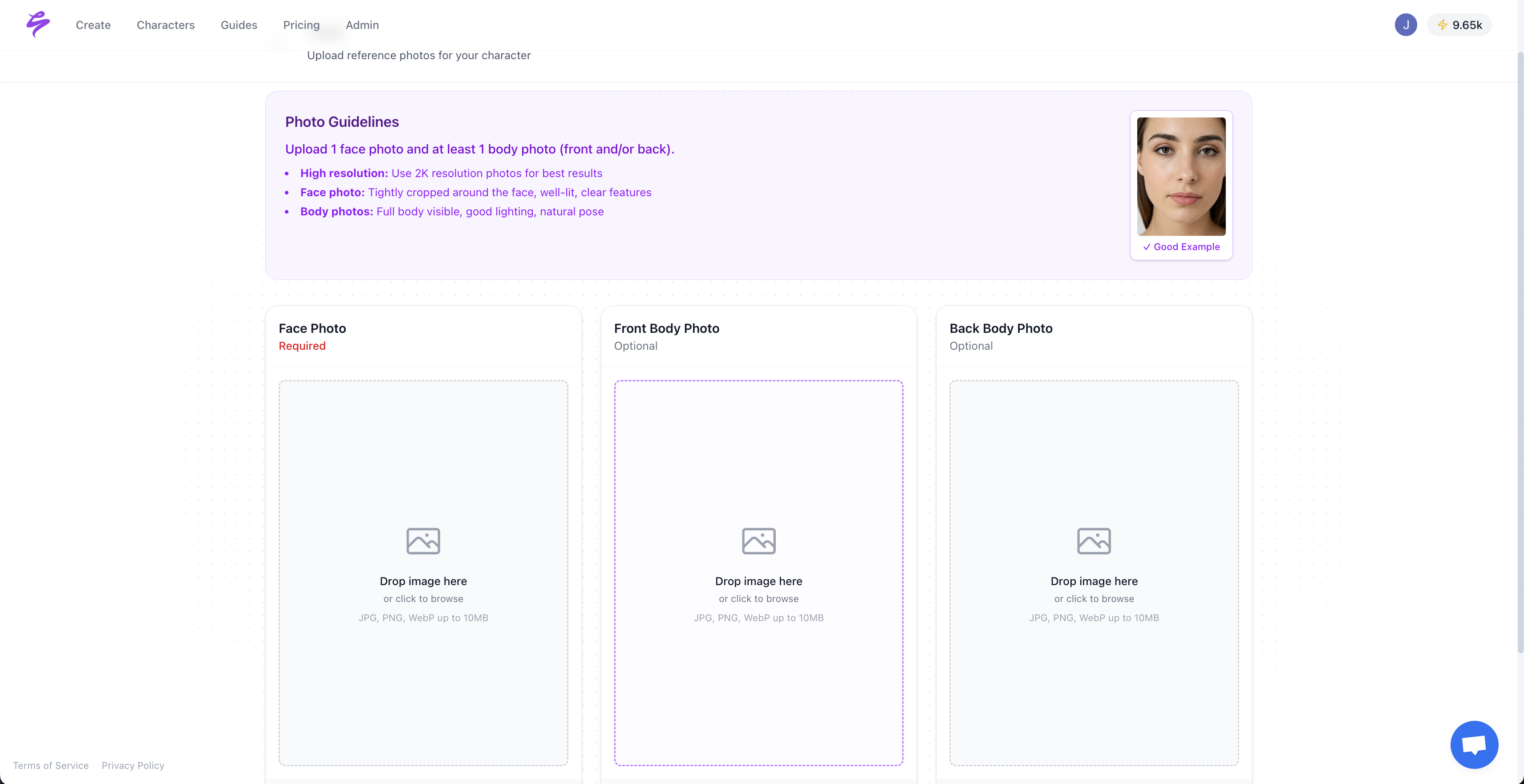Executive Summary
- The creator economy faces a growing content gap where audience demand outpaces what human creators can produce sustainably.
- Custom LoRA models separate content volume from physical shoots while preserving likeness, style, and brand consistency.
- LoRA workflows support higher output, stronger privacy controls, and new monetization options including virtual influencers.
- Sozee.ai provides a creator-focused LoRA platform with minimal input requirements and workflows built around real creator revenue models.
- Clear implementation, measurement, and ethical practices help creators scale output without increasing burnout or sacrificing authenticity.
The Creator Economy’s Content Crisis: A Looming Burnout Epidemic
The modern creator economy runs on a simple equation: more content leads to more traffic, more sales, and more revenue. This structure has driven rapid growth but also introduced a major constraint on long-term sustainability.
Creators have limited time and energy, while their audiences expect near constant output. Creators and agencies face pressure to produce continuous, high-quality content for monetization and brand engagement, and manual or traditional processes often cannot scale without leading to burnout. This imbalance creates a content gap where demand can exceed supply by a large margin.
The impact extends beyond individual creators. Agencies scramble to source assets, which leads to delayed campaigns and frustrated clients. Creative teams wait on photos and videos before they can execute strategies. Brands see slower growth when posting schedules slip. Virtual influencer projects can take months to build and still struggle to maintain the consistency needed for reliable engagement.
Traditional production methods often intensify these challenges. Physical shoots require planning, travel, equipment, crews, and favorable conditions. A single wardrobe issue, lighting problem, or weather change can disrupt a full shoot. Costs for studios, locations, staff, and post-production create real limits on how much content a team can afford to produce.
The current model directly ties a creator’s income to their physical availability. Illness, travel, or time off immediately affects posting frequency and revenue. Pressure to keep up drives overwork, which then lowers content quality and shortens career longevity.
The creator economy needs solutions that decouple content production from constant on-camera work. Get started with scalable, on-demand content creation today to reduce burnout risk and stabilize your content pipeline.

LoRA Model Solutions: Unleashing Infinite Content for Creators and Agencies
What Are Custom LoRA Models and How Do They Solve the Crisis?
Custom LoRA (Low-Rank Adaptation) models provide an efficient way to adapt large AI models for specific creators, brands, or styles. Custom LoRA models support fine-tuning of open-source AI models, which lets creators and agencies automate and personalize content generation that matches a specific brand, likeness, or creative style, and reduces dependence on physical shoots.
LoRA technology adjusts existing AI models using relatively little compute while preserving strong output quality. Generic AI generators often create inconsistent or obviously artificial images. Custom LoRA models instead learn the details of a specific face, character, or style, and reproduce that visual identity with high accuracy.
This approach makes high-quality content creation more accessible. Traditional shoots require budgets, logistics, and time. LoRA-based workflows generate professional-looking visuals in minutes. The result is a practical way to close the content gap without forcing creators to work unsustainable hours.

Key Benefits of Custom LoRA Solutions
Consistent Visual Identity Across Content
Custom LoRA models give creators the ability to maintain strict consistency over digital representations, including faces, characters, and styles, with high-fidelity likeness across generations. Consistency can include lighting preferences, facial expressions, and other recurring visual details that define a recognizable brand.
Traditional shoots vary with location, equipment, make-up, and the creator’s condition on that day. LoRA models capture the stable features that matter for identity and style, then reproduce them across images. This reliable look and feel supports stronger brand recognition and predictable audience experience.
Scalability and On-Demand Production
LoRA-based content creation allows even small creators and agencies to enter or expand in the influencer space, supported by affordable tools that automate high-volume output while preserving unique digital identities. Production volume no longer depends solely on hours in front of a camera.
The on-demand nature of LoRA content lets creators react quickly to trends, seasons, and audience requests. Instead of scheduling shoots weeks ahead, teams can generate tailored content shortly after spotting an opportunity. This faster response matters in social platforms where timing often shapes reach and performance.
Agencies that manage multiple creators gain more predictable workflows. LoRA models allow consistent posting for each client, regardless of individual schedules, travel, or personal commitments. This stability improves planning, reduces last-minute pressure, and supports more reliable revenue.
Improved Privacy, Ownership, and Monetization Control
The commercialization and consent framework around LoRA models supports ethical creation of monetizable digital content at scale, and gives agencies and creators clearer opportunities and protections. Creators can define how their likeness is used and under what terms.
LoRA workflows can include explicit registration and licensing of digital representations, so creators retain rights over the outputs. Smart contracts and tracking tools can support royalty payments, usage monitoring, and enforcement of allowed use cases.
Privacy also improves. Creators can produce content from private locations and reduce exposure associated with public shoots. This is especially valuable for those in sensitive niches or anyone who prioritizes personal security.
Hyper-Realistic Virtual Influencers
AI-powered virtual influencers designed with LoRA models have gained traction on social media and now generate income through sponsored posts, collaborations, and exclusive content. These virtual personas create new lines of business that do not depend on a single human schedule.
Virtual influencers built with LoRA can keep a stable appearance across large content volumes, stay ageless, and match a wide range of brand aesthetics. They can appear in many settings at once, operate around the clock, and reduce the personal risks that come with public exposure.
Teams can test different looks, personalities, and content strategies through iteration and A/B testing. This agility helps optimize which virtual personas perform best for specific audiences and monetization goals.
Brands and creators that adopt LoRA-based workflows gain a practical path to higher output and more flexible content formats. Start creating scalable content now and evaluate how this approach fits your existing strategy.

Traditional Content Creation vs. Custom LoRA Model Solutions: A Comparison
|
Feature |
Traditional Content Creation |
Custom LoRA Model Solutions |
Impact on Business |
|
Content Volume |
Limited by physical availability and resources |
On-demand at large scale |
Supports growth without proportional workload increases |
|
Consistency |
Varies by shoot and creator condition |
High-fidelity and repeatable likeness |
Improves brand recognition and audience trust |
|
Cost and Logistics |
High, including travel, props, crew, and studio time |
Low marginal production cost once models are trained |
Improves margins and lowers experimentation risk |
|
Time to Produce |
Days to weeks for shooting and editing |
Minutes for generation and iteration |
Faster response to trends and campaign needs |
|
Likeness Control |
Limited by real-world conditions |
Fine-grained control over likeness and style |
Expands creative options and reuse of assets |
|
Privacy |
Exposure from public shoots and shared files |
Private models with controlled access |
Reduces personal and brand risk |
|
Monetization Scalability |
Closely tied to hours worked |
Decoupled from physical effort |
Supports new products and higher content tiers |
|
Burnout Risk |
High due to constant on-camera work |
Reduced by shifting work to model-assisted generation |
Supports more sustainable long-term operation |
Comparison of Traditional Content Creation vs. Custom LoRA Model Solutions for the Creator Economy
This comparison shows why many creators and agencies now include LoRA models in their workflows. The approach changes how content is produced by easing physical constraints while keeping quality and brand fit as core requirements.
Business impact appears at both individual and organizational levels. Agencies can serve more clients without matching headcount growth. Creators can expand their catalogs without extending shoot hours. Virtual influencer initiatives can maintain consistent output with fewer scheduling or logistics issues.
Sozee.ai: A Creator-Focused LoRA Model Solution
Many platforms now support LoRA models, but Sozee.ai focuses specifically on creator economy monetization workflows. General AI tools often emphasize open-ended artistic use. Sozee instead prioritizes commercial content that supports audience growth and revenue.
Sozee centers on the needs of creators, agencies, and virtual influencer teams that require reliable, high-quality output suitable for paid content, brand deals, and fan platforms. The platform emphasizes realism, brand alignment, and business-ready workflows.

Sozee.ai Key Advantages
Minimal Input for Fast Setup: Sozee can create an accurate likeness from as few as three photos. This low data requirement removes a common barrier to entry and lets creators start testing outputs the same day.
High-Volume Content Generation: The platform supports large batches of on-brand photos and videos that align closely with real shoots. This capacity helps resolve content bottlenecks for both individual creators and agencies.
Monetization-Ready Workflows: Sozee includes workflows that reflect how creators earn. These workflows support SFW-to-NSFW funnels, agency review and approval flows, and prompt libraries tuned to content types that typically perform well on paid and social platforms.
Privacy and Control: Models built on Sozee remain private and are not reused to train other systems. This approach keeps each creator’s likeness separate and under their control.
Realistic Output Quality: Sozee’s generation focuses on realism that fits alongside traditional photography. Outputs reflect natural lighting, camera-like depth, and lifelike skin textures to reduce the sense of artificiality.
Creator-Centric Integrations: The platform supports style bundles for replicating proven formats, rapid fulfillment of custom fan requests, and optimization for platforms such as OnlyFans, Fansly, Instagram, TikTok, and X.

Creators and agencies that want to test LoRA-based workflows can use Sozee as a practical starting point. Sign up to explore infinite, brand-aligned content generation built around real creator business needs.
Implementation Strategies for LoRA Model Success
Effective LoRA adoption requires more than choosing a tool. Success depends on how creators and agencies integrate models into existing workflows and communicate changes to their audiences.
Content Strategy Evolution: LoRA models make higher posting frequencies more achievable. Creators can test daily or multi-daily schedules, respond to trending topics quickly, and deliver custom requests without planning full shoots for each idea.
Brand Consistency Guidelines: Clear visual standards help LoRA models perform well. These standards can include lighting styles, color palettes, framing preferences, and other aesthetic rules that define a recognizable brand.
Audience Education and Transparency: Many creators benefit from sharing their use of AI tools in a gradual and honest way. This approach builds trust and positions them as early adopters of practical technology, rather than creating confusion about what is real or generated.
Diversified Revenue Streams: LoRA models open new products and services. Creators can offer personalized AI content, license models to select partners, and add exclusive AI-based tiers for subscribers.
Platform-Specific Optimization: Each social or monetization platform has its own standards and algorithms. Effective teams adjust resolution, aspect ratios, and content framing to match the expectations of each distribution channel.
Measuring Success and ROI with LoRA Models
Structured measurement helps validate LoRA investments and guide optimization. Metrics should align with creator economy realities, not only traditional marketing KPIs.
Content Production Efficiency: Measure output volume relative to time invested before and after LoRA adoption. Many teams see large increases in usable assets and more consistent posting schedules.
Quality and Consistency Metrics: Review engagement rates, save and share behavior, and platform algorithm performance. If these metrics hold steady or improve as volume rises, the LoRA workflow is likely delivering effective content.
Revenue Impact: Track changes in subscription counts, upsell performance, sponsored content volume, and production costs. Some creators report significant revenue growth once content volume and consistency improve.
Creator Wellbeing: Observe changes in workload, stress levels, and time available for strategy and creativity. LoRA adoption works best when it both improves business results and makes day-to-day work more sustainable.
Competitive Positioning: Compare your presence to peers who rely only on traditional production. LoRA users often publish more frequently, test more formats, and adapt to trends faster.
Future Developments in Creator Economy LoRA Technology
LoRA capabilities continue to advance, and creators who understand emerging directions will be better prepared to adapt their strategies.
Enhanced Video Generation: Current LoRA tools focus mainly on images, but video capabilities are improving. Future systems are likely to support consistent, realistic motion content with similar efficiency to image generation.
Real-Time Personalization: Upcoming applications may allow real-time customization for different audience segments. Personalized scenes, outfits, or settings could improve engagement and conversion for specific groups.
Deeper Cross-Platform Integration: Tighter links between LoRA tools, social platforms, CMS systems, and monetization tools will streamline workflows and reduce manual steps.
Collaborative Model Development: Shared LoRA models with clear rights and revenue splits could support more collaborative content projects between creators and brands.
Ethical and Legal Frameworks: Industry standards for attribution, consent, usage tracking, and licensing will continue to evolve. These frameworks will help protect creator rights while still allowing innovation.
Teams that plan around these developments can keep their content strategies current. Start creating with Sozee today to build experience with the tools that are shaping future creator workflows.
Frequently Asked Questions (FAQ)
What is a LoRA model in the context of the creator economy?
A LoRA (Low-Rank Adaptation) model is an efficient fine-tuning method for large AI models that lets creators adapt those models to a specific likeness, brand style, or creative direction. In the creator economy, LoRA models generate consistent, high-fidelity content that matches a creator’s appearance or visual identity without requiring a new photoshoot for every idea. The model learns the core traits that define a creator’s look and style and reproduces them across many outputs. This process helps break the link between physical availability and content volume.
How do custom LoRA models ensure content consistency and ethical use?
Custom LoRA models ensure consistency by learning and replicating key visual characteristics, such as face structure, skin tone, and preferred lighting and styling choices. These models can then generate new content that aligns with the same identity and aesthetic. Ethical use comes from placing consent, licensing, and tracking at the center of the workflow. Platforms can register original content, apply clear licenses, and use automation to handle royalties and usage monitoring. These elements help creators keep control of their digital likeness and define how it can be used.
Can LoRA models really produce content indistinguishable from real photos or videos?
Well-tuned LoRA models can produce content that is very close to traditional photos or videos, especially when built on strong base models and good reference material. Early AI images often looked artificial, but current LoRA workflows address issues like skin texture, lighting realism, and anatomy. Output quality still depends on training data, model setup, and the platform used. Platforms like Sozee focus specifically on realistic output that works alongside conventional content and meets audience and platform expectations.
What are the main advantages of LoRA models over traditional AI art generators?
LoRA models offer several advantages for professional creators. They provide stronger consistency, since the model is tuned to a specific face, character, or style rather than generating a new interpretation each time. They typically deliver higher realism that better supports monetization and brand deals. They also offer more direct control over visual details, including lighting, composition, and styling rules that define a brand. LoRA tools designed for the creator economy add workflow features, such as approval flows and platform-specific optimization, along with privacy and licensing controls that generic art generators often lack.
How quickly can creators start generating content with custom LoRA models?
Timeline depends on the platform and training approach, but modern tools can be fast. Sozee, for example, can begin generating content from a small set of reference photos in a short period of time. Once a model is ready, individual images or short clips can often be produced in minutes, which enables creators to batch large volumes of content in focused sessions. This speed also makes it easier to refine prompts and styles based on performance data and audience feedback.
Conclusion: Infinite-Scale Content as a Competitive Advantage
The creator economy now operates in an environment where standard production methods struggle to keep pace with audience expectations. A growing content gap, rising costs, and increasing burnout highlight the need for new approaches.
Custom LoRA models offer a practical way to increase content volume while maintaining brand fit and likeness quality. By shifting much of the workload from physical shoots to model-assisted generation, creators and agencies can stabilize output, explore new formats, and reduce pressure on on-camera time.
Sozee.ai illustrates how a creator-focused platform can turn LoRA technology into usable workflows for monetized content. Emphasis on realistic output, low input requirements, privacy protections, and platform-aware features supports both revenue growth and sustainable operations.
Creators and agencies that adopt LoRA workflows early can benefit from higher content throughput, smoother production processes, and more time for strategy and community building. Those advantages can compound over time as content libraries grow and models improve.
The next stage of the creator economy will reward teams that can produce consistent, high-quality content at scale. Sign up for Sozee.ai to begin building an infinite-capacity content engine that supports your brand, audience, and long-term business goals.
